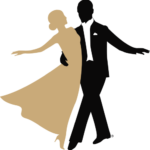Fusion of Dances: What Is What and Where Did It Come From?
Have you ever wondered how a street-corner rumba in Havana and a glittering ballroom cha-cha in New York share hidden roots? Dance styles from the Americas trace back to shared histories of migration, colonization, and sheer creative spark. Let’s dive into three vibrant worlds—and discover what makes each tick.
The Three Dance Worlds
Caribbean / Latin American Style – Emerged where Spanish colonizers met enslaved West Africans on islands like Cuba, Puerto Rico, and Haiti. Fused Indigenous ritual steps, European court flourishes, and African rhythms into living, communal celebrations.
Major folklore styles:
· Salsa: Bloomed in 1940s New York from Afro-Cuban son, mambo, and danzón
· Bachata: Grew in 1960s Dominican Republic by weaving bolero guitars with folk melodies
· Merengue: Crowned national dance of the Dominican Republic in the 1930s—simple, marching couple steps
American Rhythm Style – One half of “American Style” ballroom (alongside American Smooth)
Five official dances: Cha Cha, Rumba, East Coast Swing, Bolero, Mambo
Look for:
· Cuban motion hip action
· Bent-knee pressed walk
· Open breakaways that let partners shine
International Latin Style – One half of “International Style” ballroom (paired with Standard)
Five dances: Cha Cha, Samba, Rumba, Paso Doble, Jive
Characterized by:
· Straight-leg technique for precise hip action
· Close frame and dramatic lines
· A syllabus shaped by London dance authorities in the 1950s
Long before ballroom halls, Latin and Caribbean dances were community rituals and street-floor celebrations. Indigenous, African, and European traditions blended freely in homes, plazas, and carnivals—driven by live percussion, call-and-response singing, and improvisation.
In the early 20th century, touring Cuban and Latin American musicians and dance troupes introduced steps like the rumba, samba, and paso doble to Paris and London. High-society dance schools began teaching these “exotic” rhythms in closed-hold settings, adapting freeform footwork into partner figures.
By the 1940s–50s, the Imperial Society of Teachers of Dancing in London and later the formalized a Latin syllabus. They distilled social variations into a fixed set of figures, timing patterns, hip-action techniques, and allowed only five dances: Cha-Cha-Cha, Rumba, Samba, Paso Doble, and Jive. That you can see now at the dance events and competitions.
Quiz
Test your knowledge on Caribbean/Latin, American Rhythm, and International Latin dances:
1. Which three broad style groups are discussed in the article?
2. Caribbean/Latin American dances emerged from a mix of three cultural influences. Name them.
3. List the five dances included in the American Rhythm ballroom category, and identify one key technical hallmark that distinguishes American Rhythm from International Latin.
4. List the five dances included in the International Latin category.
5. Which country is the origin place for Merengue?
– Sergei Ivanov

